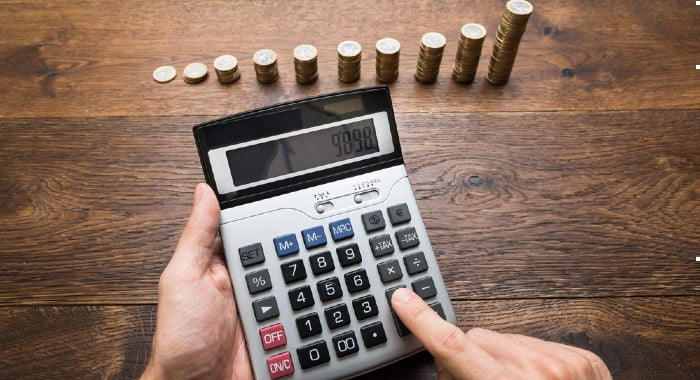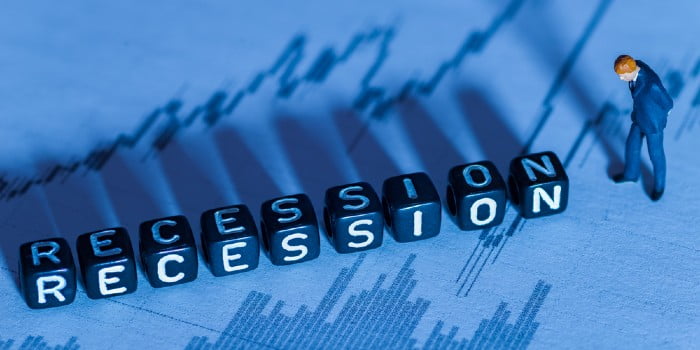Not all assets are equal in the business world.
There are some assets that you retain to keep value in your company, some assets that you acquire to make money on, and some that you need to help run your business.
In the case of the latter, called a capital asset, these assets are treated much differently to the others. Their value doesn’t stay the same – but instead deteriorates over time, which you need to keep a detailed record of. These assets only have a limited lifetime, which in accounting terms is called a useful life.
If you’ve ever brought equipment to help run your business, such as a computer, you will have this type of asset. This means you need to know how to report it to the HMRC, how much value it loses per year, and more importantly, how much useful life it has left. That’s what this guide on how to calculate remaining useful life of an asset is for.
We’re not going to lie, this one might be hard to get your head around and involves (shock!) maths. But it’s important information that you need to know – so let’s get started.
What is a capital asset?
First things first, a capital asset is an item of property that is not intended for sale. This could be anything from:
- Buildings, such as an office;
- Stocks and bonds;
- Computers or other business equipment.
If a business buys a property that they intend to sell, this is not a capital asset. This is inventory.
Whatever the property in question is, a capital asset will be kept within the business unsold, with a useful life longer than a year.
‘Useful life’ here is more than just how long you intend to use the item. It’s actually an accounting term that’s used to value how many years that asset will remain ‘in service’ (i.e. useful) and cost-effective. So, the minute that it becomes obsolete needs major, or expensive repairs or costs more to use than it generates, its useful life has ended.
It’s a very bleak way to look at things, but there’s no room for sentiment in accounting.
The value the asset loses over its lifetime is called depreciation. We’ll cover the various types of depreciation later in this article, as well as how to calculate remaining useful life of an asset.
How do capital assets affect your tax?

Capital assets are treated differently from any other asset.
If your capital assets aren’t properly identified and submitted, you could either pay more tax than you need to or even face an investigation from the HMRC. Here’s the very rough rundown of how capital assets affect your tax:
- Every year, part of the value of the assets is deducted from your business profits. This is not treated as an allowable expense, so you can’t claim back on this value.
- Although capital assets are removed from your profit, this value needs to be added back when working out how much tax you pay.
- Although capital assets aren’t an allowable expense, the HMRC do offer tax relief through capital allowances.
- There’s also a 100% first-year allowance, which lets you claim back the full amount of tax on the first year that you purchased the item.
If you’re ever unsure of how to list and classify your capital assets, it may be worth speaking to an accountant to help guide you through the situation.
Not got an accountant yet?
Recommended – Top-Rated Online Accountant:
Do you need to tell the HMRC about your capital assets?
Capital assets should be listed on your balance sheet for your end of year accounts, so yes, if you own a limited company, you need to tell the HMRC.
Here’s some great advice: If you’re ever unsure about information that you have to submit to the HMRC, it’s always best to be on the safe side. Trust us, you do not want to be facing a fine or HMRC investigation for a careless mistake or simple oversight. It’s not worth it.
Now there’s one snag with this. To list your capital assets on your balance sheet, you need to know their current value. This means (and you may have guessed this), calculating the remaining useful life of an asset and how much its value has depreciated since you purchased it. Lucky for you, we’ve got those calculations down further in this article.
If you are a sole trader, you don’t have to submit end of year accounts with the HMRC. It’s one benefit being a sole trader has to offer. However, knowing how to calculate remaining useful life of an asset has its uses beyond filling out a balance sheet, so this information is still good for you to know.
EXCLUSIVE OFFERS – Save On Your Accountancy Costs
What are the types of asset depreciation?
Before you start calculating the remaining useful life of an asset, you need to work out what type of depreciation that your asset is under. This is because different assets lose value in different ways. For example, a computer that you use every day might evenly decrease value each year.
However, a brand new company car may suddenly drop in value for the first few years, but then plateau off into a steady decrease.
There are two main types of asset depreciation. These are straight-line depreciation and accelerated depreciation, which we’ll explain in more detail.
Straight-line depreciation
Straight-line depreciation is where the value of a fixed asset is reduced gradually over its useful life. This is the common and default method of depreciation that’s used to calculate remaining useful life of an asset.
For example, let’s say that you purchased a computer for £10,000, and has a salvage value of £2,000. The salvage value is how much an asset is estimated to be worth at the end of its useful life. For example, the salvage value of a car would be how much the car would be worth if sold to a scrapyard.
The computer in question has a useful life span of 8 years. That means that in 8 years, the value of the computer would be £2,000 and will have reached its salvage value.
In straight-line depreciation, the asset will lose value evenly over these 8 years, losing a value of £1,000 per year.
| Year | Value of asset (beginning of the year) | Depreciation | Value of asset (end of the year) |
| 1 | £10,000 | £1,000 | £9,000 |
| 2 | £9,000 | £1,000 | £8,000 |
| 3 | £8,000 | £1,000 | £7,000 |
| 4 | £7,000 | £1,000 | £6,000 |
| 5 | £6,000 | £1,000 | £5,000 |
| 6 | £5,000 | £1,000 | £4,000 |
| 7 | £4,000 | £1,000 | £3,000 |
| 8 | £3,000 | £1,000 | £2,000 |
The formula for to calculate straight-line depreciation is:
(Purchase price – salvage value) / Useful life
Lost the buzz for your business?
Starting a business is exciting. Succeeding is rewarding. The bit between is hard, repetitive, and full of self-doubt.
The Lonely Middle Club (From Business4Beginners) helps you through it:
Get support and advice from other small business owners
Remove the self-doubt that’s holding your business back
Learn techniques and strategies to grow your business faster
Be inspired with our exclusive ‘swipe’ file and AI-powered tools
No pressure – work at YOUR pace, towards YOUR goals
—
Accelerated depreciation
Accelerated depreciation is similar to straight-line depreciation, except it runs on the assumption that more value is lost in the first few years of an assets useful life, rather than being lost in an even, straight line.
There are two methods of calculating accelerated depreciation. The first is the Sum of the Year (STY) method.
This method requires you to work out a digit called a Sum of the Year before you can work out how much value is lost each year. This is calculated using the following formula:
(Useful life X (Useful life +1)) / 2
Once you have this figure, you will use this calculation to work out the depreciation for each individual year:
Total depreciation x (remaining useful life / Sum of Years digit)
Using the same example from earlier, you can see how this £10,000 depreciates at a more rapid rate in the beginning, before reaching the same salvage value of £2,000.
| Year | Value of asset (beginning of the year) | Depreciation | Value of asset (end of the year) |
| 1 | £10,000 | £1,777 | £8,223 |
| 2 | £8,223 | £1,555 | £6,668 |
| 3 | £6,668 | £1,333 | £5,335 |
| 4 | £5,335 | £1,111 | £4,224 |
| 5 | £4,224 | £889 | £3,335 |
| 6 | £3,335 | £667 | £2,668 |
| 7 | £2,668 | £445 | £2,223 |
| 8 | £2,223 | £223 | £2,000 |
The other method of calculating accelerated depreciation is using the double-declining balance method. This one only involves one calculation:
2 x straight-line depreciation percent x value at the beginning of the year.
That seems complicated, but it’s basically doubling the rate at which the value declines. In our first example, the depreciation rate was 10%. Using the above formula, the new rate would be 10% of the value at the beginning of the year.
Here’s how this method affects our computer example.
| Year | Value of asset (beginning of the year) | Depreciation | Value of asset (end of the year) |
| 1 | £10,000 | £2,000 | £8,000 |
| 2 | £8,000 | £1,600 | £6,400 |
| 3 | £6,400 | £1,280 | £5,120 |
| 4 | £5,335 | £1,024 | £4,096 |
| 5 | £4,224 | £819 | £3,277 |
| 6 | £3,335 | £655 | £2,622 |
| 7 | £2,668 | £524 | £2,098 |
| 8 | £2,223 | £419 | £2,000* |
*This method will, however, put the asset beyond its salvage value. So for year 8, it will instead just stick at the £2,000 salvage value instead of being taken past its useful life.
Tired of math yet?
Don’t forget, you can always leave these calculations to your accountant, or use accounting software to automatically crunch these numbers on your behalf.
If you want to get started with accounting software, we tried and tested every option on the market to find the best solution for you. Get started with our top three picks:
Top-Rated Accounting Software:
| Accounting Software | Cheapest Package | Ease Of Use | Our Rating | Review | Official Site |
|---|---|---|---|---|---|
 | £19/mo | Excellent | 9.4 | Read Review | Visit Website |
 | FREE | Outstanding | 9.3 | Read Review | Visit Website |
 | £12/mo | Excellent | 9.3 | Read Review | Visit Website |
How to calculate remaining useful life of an asset

These calculations and depreciation values are all well and good, but they all required one piece of information: The useful life of an asset.
And that’s what we’re here to find out, isn’t it? How to calculate the remaining useful life of an asset.
First, you need to know the starting value of your asset. In most cases, this is how much you’ve paid for it unless it was gifted to your company. In which case, the value will be how much it currently retails for.
Second, you need to know its salvage value. This is how much the asset will be worth when sold or traded at the end of its life. In accounting terms, you basically have to know what it’s worth now, and what it will be worth when it stops being profitable for your business.
The difference between these numbers is your depreciation. This is how much value that you will lose on your asset if you use it over its full lifetime.
So, using the same example as before:
- The starting value = £10,000
- The salvage value = £2,000
- The depreciation = £8,000
When we used this example earlier, we used the lifetime value of 8 years. But the real lifetime value is slightly more complicated to understand.
Now is time for the… slightly awkward news. The useful life of an asset is predetermined by the manufacturer or HMRC guidelines, depending on what type of asset that it is. To give you a bit of a better example, this is a guideline from the IRS on what types of useful life an asset has.
| Lifetime use | Type of asset |
| 3-year lifetime use | Tractor units and horses over two years old |
| 5-year lifetime use | Cars, taxis, buses, trucks, computers, office machines such as copiers and printers. |
| 7-year lifetime use | Office furniture and fixtures |
| 10-year lifetime use | Water transportation equipment, single-purpose agricultural or horticultural structures, and fruit- or nut-bearing vines and trees |
| 15-year lifetime use | Land improvements, such as shrubbery, fences, roads, and bridges |
There’s a lot of agricultural guidelines from the IRS it seems. What a country.
In the UK, we employ a similar system. If you’re unsure of the lifetime value of an asset, the best place to look first is via the manufacturer, which may publish lifetime information on the item in particular.
If you’re ever in doubt, just ask your accountant. They’ll be able to sort through the numbers and confusion for you, leaving you more time to focus on your business.
Need more business advice?
Busienss4Beginners is always here for you. Check out our website for:
- Accounting help and advic;
- Legal tips, information and guidance;
- Inspiration to help your online business thrive;
- Creative ideas to market your business and ignite your sales;
- Business news to keep you informed and in the loop.
And much more. Whatever you need, we’ve got it here at Business4Beginners.









